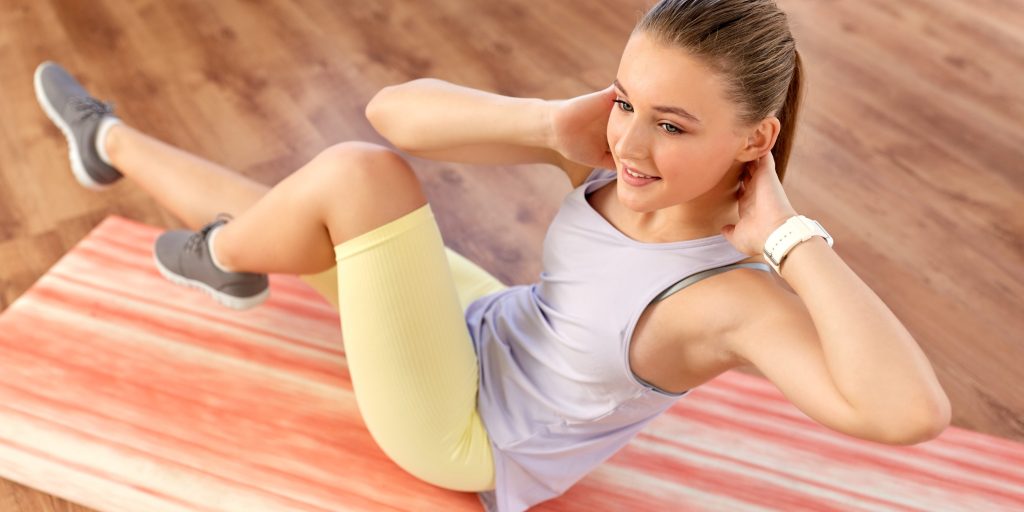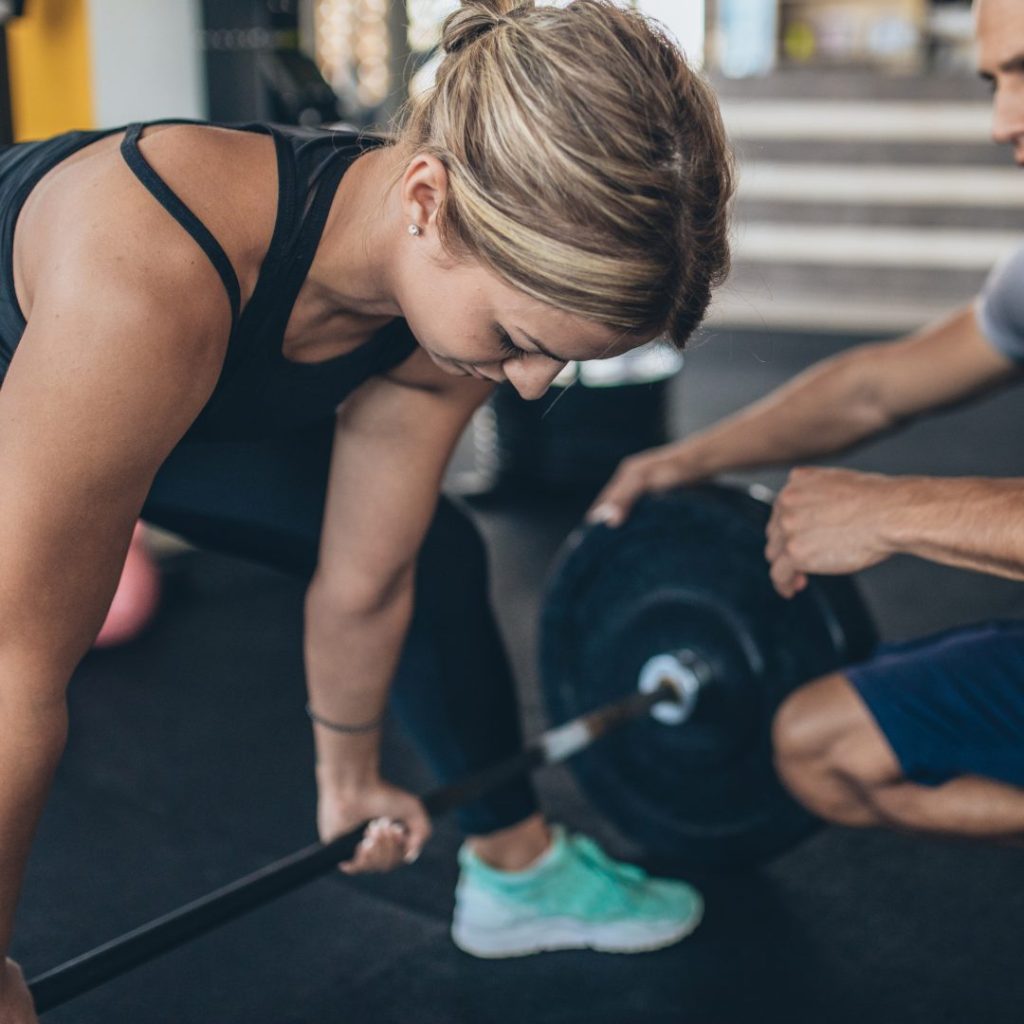
Exercise is really beneficial in the teenage years. As well as physical benefits, there are many psychological and mental health benefits as well. Unfortunately many Australian teens are not meeting the recommended levels of physical activity and exercise.
Exercise And Physical Activity In Australian Adolescents
Adolescents are defined as the age group of 13-17 year olds. As adolescents enter a stage in their life where they become more independent, it is vital for them to create healthy physical activity routines and exercise habits. This is because good exercise habits formed in adolescence correlate positively with good exercise habits in adults, which in turn correlate with better overall general health throughout life.
It is important for adolescents to be physical active as it assists with weight management, improves sleep, reduces stress and strengthens muscles and bones.1 On the other hand, being physically inactive can lead to an increased risk of developing chronic health conditions including cardiovascular disease, obesity and types 2 diabetes.
Physical Activity And Mental Health In Adolescents
When most people think of exercise, they think about the physical benefits. However, regular exercise has also been shown to deliver a wealth of mental health and psychological benefits, regardless of age or fitness level. These mental health benefits are especially important during adolescent years because it is often a difficult time in terms of emotional regulation, social integration, relationship formation, development of self-worth and a positive self-image, plus the stress of intensive education and regular examinations. As a teen, the role of exercise in developing healthy brain function and mental health is essential.
Exercise helps teenagers in many ways including reducing their risk of mental illness, increasing self-confidence, improving stress management, and boosting memory function which is essential for effective learning. Extensive research on exercise and mental health, including during the adolescent years, shows large benefits including;
1. Reduced stress, anxiety and depression
2. Increased feeling of relaxation
3. Increased self-confidence, self-worth and a positive self-image
4. Increased memory and cognitive function (essential for effective learning)
5. Improved creativity, conflict resolution skills, co-operation with peers, social skills and leadership
6. Improved sleep – also an area where many teens struggle
This solid body of evidence shows that exercise for adolescents brings just as many benefits to mental health and cognitive/learning capacity as it does to physical development. And we need to remember that the term “physical activity” includes more activities than just traditional exercise like walking, running, getting to the gym or playing team sports. It can also include gardening and mowing lawns, carrying groceries and doing household chores. However, guidelines (below) show that teens should be engaged in some more vigorous activity on a regular basis. .
Australian Physical Activity and Sedentary Behaviour Guidelines
The Australian Physical Activity And Sedentary Behaviour Guidelines state the amount of physical activity necessary to sustain good health.2 They are government-backed guidelines that have been developed by reviewing extensive research.
For adolescents to meet the Australian physical activity and sedentary behaviour guidelines:
1. Adolescents should be engaging in several hours of light physical activity each day (eg walking, light house work, cooking or folding laundry) PLUS a minimum of one hour of moderate-vigorous physical activity daily (eg participating in sports like running, soccer, tennis or swimming; cardio-based gym classes)
2. Adolescents should also engage in muscle strengthening exercise 3 times or more per week. Activities that will assist in muscle development are resistance exercises using bodyweight, weights or resistance bands. Pilates can also be used.
How Much Screen Time Is Recommended For Adolescents?
Ok, this is a big issue in many households! The Australian Physical Activity And Sedentary Behaviour Guidelines state that adolescents should avoid engaging in more than 2 hours of screen use per day and should reduce long periods of sitting. Some strategies to avoid prolonged periods of sitting are setting timers or allocating a time to stand up and move.

How Much Screen Time Is Recommended For Adolescents?
Ok, this is a big issue in many households! The Australian Physical Activity And Sedentary Behaviour Guidelines state that adolescents should avoid engaging in more than 2 hours of screen use per day and should reduce long periods of sitting. Some strategies to avoid prolonged periods of sitting are setting timers or allocating a time to stand up and move.
Are Australian Adolescents Meeting The Guidelines For Physical Activity?
Based on recent statistics, Australian adolescents are not meeting the necessary guidelines to sustain good health3:
– 1 in 10 adolescents met the physical activity guidelines
– 1 in 5 adolescents met the sedentary behaviour guidelines of screen time
– 16% of 15 to 17 year olds met the muscle strengthening guidelines, a larger percentage being adolescent males.
– 2 % of adolescents met both physical activity and muscles strengthening guidelines.
The Benefits Of Strength Training In Adolescents
There are many benefits of starting strength training in the teenage years. This includes for females as well as males, especially given the increased incidence of osteopenia and osteoporosis in women. Strength training during the teenage years has been shown conclusively to improve peak bone density in early adulthood, and this is one of the most effective ways to reduce the risk of osteoporosis.

Unfortunately, there are several myths about strength training in adolescence:
– Playing sport is enough
– Strength training is only for sporty kids
– Strength training is dangerous for adolescents due to their growing bones
– Adolescents do not need strength training
If strength training is performed safely with correct technique and structure (age-related exercises, focus on major muscle groups, appropriate weight selection), it is highly beneficial for adolescents. It increases overall muscular strength, maximises bone density, and can reduce the risk of developing injuries if performed correctly. Importantly, performed correctly, weight training in adolescents does NOT cause any growth-related problems. See our Strength Training For Adolescent Runners blog post for more information.
Pilates And Adolescents
Pilates is an excellent general fitness and muscle strengthening activity for adolescents. It is enjoyable and adds variety to regular activities. It can be done individually or as a group exercise, which is often desirable for teenagers. It can be especially beneficial in improving movement co-ordination and control, plus positional awareness, which can be important during growth periods where body morphology and mechanics can change significantly.
Participation and popularity levels of Pilates have increased throughout the years, as it is suitable for all ages, fitness levels and body types. In adolescents, Pilates assists in understanding the body and how it works, leading to increased self-esteem and confidence. Overall, benefits of Pilates include enhanced flexibility, strength, posture, energy levels and assists with weight loss.
Getting Teenagers To Exercise Regularly
Ok, it’s all very well knowing the benefits of exercise for adolescents, and the guidelines for physical activity and sedentary behaviour. But how can you actually get an exercise-resistant teenager for become more active? Well, there’s no single easy answer to that. But from our experience, here are some important things to think about;
1. Find something they like (or at least don’t strongly dislike!): for exercise to be sustainable for anyone, it has to be something they enjoy, or at least don’t mind too much. Talk about options, even try a few things out to see how it feels. From walking to running, team sports to solo exercise, indoor to outdoor, and land-based to water, there are so many options to try.
2. Make it as convenient as possible: to be regular and ongoing, exercise needs to be fairly convenient. For most people, having a gym you love but takes 45 minutes each way to get to means that life will get in the way and you’ll start skipping sessions, and then stop completely. Try to find something that fits in with your lifestyle, is fairly close, available at convenient times, and doesn’t cost too much to begin or keep going with.
3. Get some friends involved: research shows that exercising with friends can increase your chance of making sessions regular and ongoing. Having someone to give you a push to attend even when you might not feel like it, and you doing the same for them, is really effective. Having friends involved can often make the sessions more fun, and feeling guilty that you’re letting someone down if you don’t go can be great for motivation as well! Plus, given that the teenage years are often very social years and friends are really important, this can be a good strategy.
Exercise Options For Teenagers In Surry Hills
Central Performance offers several exercise options that are great for teenagers in the Surry Hills and inner-Sydney area.
1. Exercise Physiology And Personal Training For Teenagers
Our degree-qualified coaches regularly work with teenagers of all fitness levels. They are experts at engaging with adolescents and motivating them with personalised programs that match their preferences, goals, stage of development. We have helped previously inactive teens become more active on a regular basis as they become more comfortable with exercise and how their body improves with ongoing training. We also work with adolescents who need a strength-based program to improve their performance in other sports and reduce their risk of injury.
2. Partnered And Small-Group Exercise Sessions
For clients, including teenagers, who prefer to work out with friends, we regularly have partnered or small-group sessions with our coaches. This can be a cost-effective way to receive regular training sessions with our exercise physiologists, with the added benefits of training with friends. You can arrange sessions at a time that works for you, your friends and one of our coaches. We can also often partner you up with someone who will work well with you in sessions if you are looking for a training partner.
3. Pilates For Teenagers
We have found that Pilates is a great way for teenagers (especially girls) who are not very “sporty” to get into a regular exercise habit that they really enjoy. We believe this is because it is non-competitive, done at a more relaxed pace and intensity, and is non-threatening in terms of weight or other people. Pilates is also considered a “mind-body” style of exercise, like yoga, that often suits a more reserved or quieter type of personality. Plus using the reformer and chair equipment adds some novelty value and allows a wide variety of exercises to be done. See our Pilates For Teenagers post for more info.
Exercise For Teenagers – More Information And Bookings
For more information about exercise options to suit teenagers please click below to contact us or call reception o 9280 2322. Or if you’re ready to get started, use our convenient online booking system by clicking below.
References
- Insufficient physical activity – Australian Institute of Health and Welfare. Australian Institute of Health and Welfare. (2022). Retrieved 30 September 2022, from https://www.aihw.gov.au/reports/australias-health/insufficient-physical-activity.
- Insufficient physical activity. Australian Institute of Health and Welfare. (2022). Retrieved 30 September 2022, from https://www.health.gov.au/health-topics/physical-activity-and-exercise/physical-activity-and-exercise-guidelines-for-all-australians.
- Insufficient physical activity , Insufficient physical activity – Australian Institute of Health and Welfare. Australian Institute of Health and Welfare. (2022). Retrieved 30 September 2022, from https://www.aihw.gov.au/reports/risk-factors/insufficient-physical-activity/contents/physical-inactivity.

